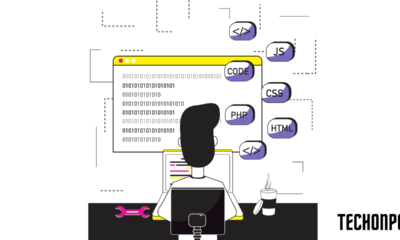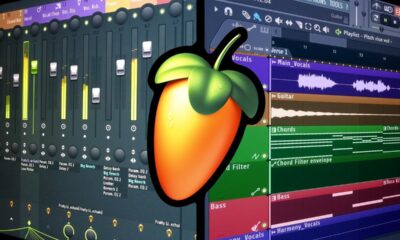Education
A Beginner’s Guide to Android Emulators
Published
1 year agoon
By
techonpc
PC
Emulators have been around for a long time, and most traditional systems have their emulators. However, with the advent of Android Platforms supporting hardware has become prominent. And with the help of Android Emulators, the job has become a bit straightforward, as emulators allow users to run programs and games from other platforms within the framework of their Android phones. The Android emulator enables programmers and designers to develop applications for the Android platform without using a physical device.
However, the level of support to be provided by the Android Emulator depends on how complex the application being run is. For example, a System Emulator can be run in any operating system environment. It is just like running another operating system inside Windows or macOS. The primary demand for Android Emulators has been from Gamers, and those who demand better performance and faster load times use Android emulators more than others.
Introduction to Android Emulators
Many app developers use different methods to test their apps. As it performs a similar task to Virtual Machine, using it can be an advantage to developers. But today’s generation demands more from their systems, including processing power, multimedia support, and high-resolution displays. The hardware developers deliver greater power with every new hardware generation. Unfortunately, software advances need to be keeping pace with hardware advancements. To keep up with their devices, Android Emulator can help in several ways, a few of these are listed below:
- An Android emulator is a software program that enables you to run applications designed for the Android platform on your laptop, desktop, or portable PC. Applications intended for this platform can run natively, without requiring re-packaged or reprogramming. This results in more processing speed and allows the device to do lots of work simultaneously, compared with a similar hardware process executed with less efficient emulation.
- The main idea behind an Android emulator is to allow users to run Android apps on any device that is not compatible with it or capable of handling regular android apps. With the help of emulators, many people can run their favorite applications that would otherwise be underutilized. Emulators are a simple and easy process and can be used without much hassle.
- Android emulators help drive the popularity of the Android platform with developers. An emulator can be better than an actual device when performing tests, especially those that need to run longer. Additionally, an emulator helps cut costs since it is just an implementation of the device in software.
In the beginning, people relied on mobile hardware when it came to playing games, but today things have changed. The introduction of Android emulators has opened up many new opportunities for gamers. Moreover, setting up an Android emulator is simple as they require minimal configuration.
Perks of using an Android Emulator
Android Emulators are one of the essential tools for Android developers and designers. As we all know, testing an app on an actual device by downloading it is only sometimes feasible. Due to this, developers and designers download and test apps on the emulator before publishing them in the market. The android emulator is possible on a Windows system by installing the essential software and drivers to run the emulator. Once you have set everything up correctly for Windows, you can use the emulator to test your android apps or games on your personal computer before releasing them in the market. Moreover, there are many more benefits to using android emulators than what is commonly known to people.
Offers perfect speed for Data Transfer
Android emulator helps in all the processes that involve creating, debugging, and checking Android applications. And, it is the best substitute for a physical device for testing. It saves time and cost by using all the features provided by the emulator, which can be used to test applications in just one go. It is easy to find out if there are any bugs in the visual part by using this Android emulator. It also allows you to test the buttons and controls that are useful for most users.
Combined with Physical Sensors
Android emulator is a great tool to test your applications under context and without setting up a device. The emulator allows you to easily upload .apk files from your computer to an emulator, install it, and run it. The new version of the Android Emulator, included with the Android 2.2 (Froyo) SDK and above, contains a new drag-and-drop file upload option for testing your apps more conveniently. To use it, simply drag your .apk file from your computer’s file browser onto the emulator window, and it will be immediately uploaded to the device for you to install.
Drawbacks of using Android Emulator
Android emulator is a valuable tool for Android developers whose ultimate goal is to develop applications running smoothly on different devices. The emulator allows testing any code in a simulated environment before running it on a real machine. This is particularly helpful if you try making your application work with varied screen sizes and configurations. However, with it, there are certain drawbacks associated that a gamer needs to keep in mind. These drawbacks have been listed here after looking at the problems that a gamer or a tester faces while using that platform.
Hardware and Software Issues
During testing, it’s essential that we emulate a real device inside your computer. This is called an android emulator and with the ARM processors not being powerful enough, it makes it tough to test applications on android emulators. It will still have some differences in the actual device; when you use an emulator the battery never drains, that’s why you should never get used to thinking so. Furthermore, the hardware and processor problems make it tough for gamers to understand what they need to come up with as a better solution.
Space confined
If you are using an Android emulator for testing your app, you should know that it has a limit on the number of preferences it can save, which means that the emulator is restarted with every change made, and if the preference to save is off then the test will have to be performed all over again. Furthermore, the problems related to space have been over the years and hence the perfect solution to it is still under search and hence gamers might have a tough time dealing with it.
Android emulators come with a wide range of features to help you in making your development process a lot more efficient and saving time. However, with the advantages already there, gamers should look at the drawbacks before going for them.
Working on the Android Emulator
Android emulator is software that emulates the android operating system in order to test and prototype Android applications. Owing to its features, the device operators can create Android applications. Furthermore, It allows you to test the applications of the Android operating system on your PC without actually using an Android device. Moreover, working with an Android Emulator is an easy task as it allows several programs to run on it and hence makes the task easy for gamers.
Quick Emulators (QEMU)
QEMU is a program that translates CPU instructions from one computer architecture to another. It’s also an emulator capable of running operating systems made for one machine (called the guest) on a different machine (called the host). QEMU can do this with a combination of dynamic translation, binary translation, and hardware emulation.
- QEMU can currently emulate CPUs. It can use existing virtualization technologies (KVM, VirtualBox) as the machine’s hardware very well. QEMU can emulate machines with different architectures, enabling it to run software written for one CPU on a different one. This differentiation of QEMU from other virtualization software like VirtualBox and VMware is critical for us because we want to run the emulator in the Cloud.
- More importantly, though, QEMU consists of a fully open-source code base. Upon first installing QEMU you may wonder where the familiar interface is hiding – because there isn’t one.
- Instead, it’s up to the user to deal with all of the ins and outs of running it, from loading programs and creating disk images to providing operating-system configurations. That’s because QEMU is highly dependent on virtualizing hardware devices such as keyboard controllers, mouse interfaces, and graphic cards in addition to CPUs – features that are rarely present in reduced or modified forms on other virtualizers.
One advantage given by this manual work is a certain flexibility: QEMU is easily scripted for automatic testing of embedded or modified operating systems or for rapid setup of development environments.
It is good to use emulators because they are very useful for developers who develop Android applications through their desktops. It helps them in developing their app as per their specifications and also details analysis of their application on any android device without actually going for installation of the application on an actual device.
Hypervisors
Years ago, the term “virtualization” referred to software packages that could be used with non-virtualization hardware. For example, VMware’s Workstation used a client-server model where the Workstation software was installed on one machine and the VM (virtual machine) would run on another.
- Virtualization means the modules of a physical machine can run as virtual machines (VMs). Unlike Inception, the movie where a man goes into another man’s mind via a dream, the Hypervisor is not profound, simply some software that allocates resources to operating systems. Virtualization is complex and daunting for the uninitiated.
- However, it can be easier than you think. It can also ease certain pain points in your IT organization. Dynamic translation on the other hand is extremely fast because no translation occurs until the code is just about to execute.
- The resulting computer architecture is radically different from anything else; something new under the sun. It can be embedded into the firmware and run on ultra-low voltage with high-performance applications such as game consoles.
- Virtualization is a style of computing in which a host operating system creates and runs, with the aid of a virtual machine monitor (VMM), one or more isolated virtual machines. Each virtual machine can run its own applications on its own operating system.
Virtual machines created using this method are called guests, as opposed to legacy hardware virtualization solutions, which are called host systems. Clearly, it is making an abstraction of a file so that it can be used by multiple things simultaneously as if it were multiple independent things.
Wrapping Up
Android Emulator is a virtual device that runs on your computer having the same features as an Android smartphone. It helps developers and designers to make apps for Android with utmost comfort. There are different types of emulators available, but all of them don’t have some or another advantage over others. So, it is necessary to choose an emulator which can give you the best comfort when making an app. While choosing the emulator, first of all, check whether it supports Keyboard or not, because that’s the most essential thing while designing any app.
Android development has become very popular since it contains all the facilities similar to those available in any smartphone using the android operating system. And for this, an Android Emulator has been a necessity for every gamer or tester who is looking to explore some new things or the programs. However, apart from Android Emulators, some other promising testing tools like LambdaTest are worth a consideration.
This will help the testers understand what exactly they need to change to run the particular app successfully on the mobile device. With LambdaTest, it is easy to perform manual and automation testing of web and mobile applications. It is cloud-based and on-demand, allowing you to serve thousands of tests on multiple operating systems and browsers. Furthermore, it lets you automate your tests and share them with other team members and testers. The platform is trusted by over a million developers across 130+ countries.
Follow Me

Unleashing the Power of the Office Accelerator: Maximizing Productivity and Efficiency in the Workplace with Office 365 Accelerator

Unlocking the Hidden Potential of Your Website: Strategies for Growth

From AI to VR: How Cutting-Edge Tech Is Reshaping Personal Injury Law in Chicago
Trending

 Microsoft4 years ago
Microsoft4 years agoMicrosoft Office 2016 Torrent With Product Keys (Free Download)

 Torrent4 years ago
Torrent4 years agoLes 15 Meilleurs Sites De Téléchargement Direct De Films 2020

 Money4 years ago
Money4 years ago25 Ways To Make Money Online

 Torrent4 years ago
Torrent4 years agoFL Studio 12 Crack Télécharger la version complète fissurée 2020

 Education3 years ago
Education3 years agoSignificado Dos Emojis Usado no WhatsApp

 Technology4 years ago
Technology4 years agoAvantages d’acheter FL Studio 12

 Technology4 years ago
Technology4 years agoDESKRIPSI DAN MANFAAT KURSUS PELATIHAN COREL DRAW

 Education3 years ago
Education3 years agoBest Steph Curry NBA 2K21 Build – How To Make Attribute, Badges and Animation On Steph Curry Build 2K21

You must be logged in to post a comment Login